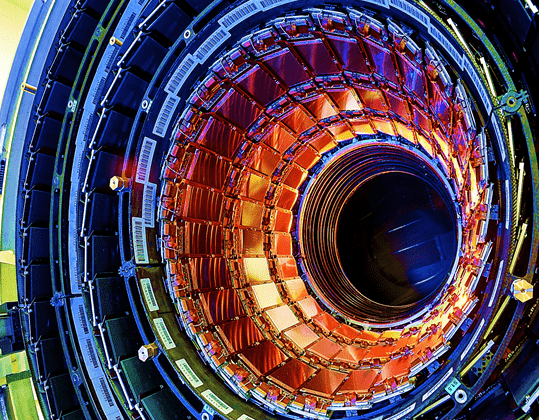Large Hadron Collider:
Large Hadron Collider is the world’s most powerful particle accelerator. It was constructed by the European Organization for Nuclear Research (CERN) in the same 27-km (17-mile) tunnel that housed its Large Electron-Positron Collider (LEP). The tunnel is circular and is located 50–175 meters (165–575 feet) below ground, on the border between France and Switzerland.
The heart of the LHC is a ring that runs through the circumference of the LEP tunnel. The ring is only a few centimeters in diameter, evacuated to a higher degree than deep space and cooled to within two degrees of absolute zero. In this ring, two counter rotating beams of heavy ions or protons are accelerated to speeds within one-millionth of a percent of the speed of light. Protons belong to a category of heavy subatomic particles known as hadrons.
At four points on the ring, the beams can intersect and a small proportion of particles crash into each other. At maximum power, collisions between protons will take place at a combined energy of up to 13 TeV, about seven times greater than has been achieved previously. At each collision point are huge magnets weighing tens of thousands of tons and banks of detectors to collect the particles produced by the collisions.